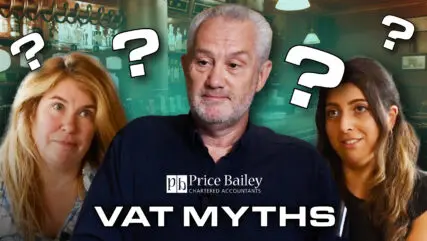
VAT Myths
In our series of VAT Myths, we debunk some of the most common VAT myths once and for all.
Research & Development (R&D) tax relief is a valuable incentive that allows UK businesses to recover a proportion of the money they invest in innovation. Whether a company is developing new products, processes or technologies it provides critical funding that can help drive progress and growth.
R&D tax relief is beneficial to loss-making companies too, providing them with real cash credit, and for profitable companies it’s a valuable reduction in tax liability. Rising costs (such as employers NICs at 15%) means that claims are now worth more.
R&D tax relief is available to businesses in a wide range of sectors undertaking activities that involve scientific or technological advancement. We’ve detailed the eligibility criteria in our recent R&D tax credits blog.
There are two key elements to consider when assessing whether a project qualifies for relief:
Our team of R&D tax credit experts have supported businesses in varying sectors, including:
R&D tax relief allows businesses to claim back a portion of the money they spend on qualifying research and development activity. The benefit varies depending on whether your business is profit-making or loss-making – but in both cases, it can make a meaningful difference to your cashflow and long-term strategy.
Contact us today to find out more about how we can help you
We pride ourselves in offering a collaborative approach guiding you through every stage:
Our in-depth supporting reports can help to reduce the risk of a HMRC enquiry and show that reasonable care has been taken upon application of the relief.
We support businesses in all sorts of sectors, both traditional and emerging R&D sectors. Our advice is completely tailored and not ‘off-the-shelf’. It can also be of benefit that we can provide a full range of financial services including end of year accounts, payroll, outsourcing and company secretarial prior to claim submission, making the claim smoother and more time efficient for you.
We pride ourselves on offering a single adviser who can support you across a wide range of services.
R&D tax relief is available to UK companies that are subject to corporation tax and are undertaking qualifying research and development activities. It applies across a wide range of sectors.
To qualify, a company must:
Many businesses assume that R&D tax relief only applies to traditional “lab coat” sectors like pharmaceuticals or engineering. In reality, R&D can take place in almost any industry – as long as the work involves overcoming scientific or technological uncertainty in an attempt to advance the baseline level of knowledge in a field.
It’s about the ‘activity’ you’re undertaking, not the industry. If your team are pushing technical boundaries, creating new processes, or improving existing systems in a way that isn’t straightforward, it’s worth exploring if you qualify.
Staff costs, expenditure on subcontractors, externally provided workers, materials and consumables (including utilities), computer software, cloud computing costs and data licenses. For more detail on the costs that can be claimed, you can read our R&D tax credits blog.
Working with an experienced adviser helps avoid these mistakes and ensures your claim is robust, well-documented and maximised.
Fill out our form below to find out…

In our series of VAT Myths, we debunk some of the most common VAT myths once and for all.

Use our calculator to assess the impact of the changes here...

Managing the risks that academies are facing in today's environment shouldn't be a tick box exercise, but a key component to ensure the success of the academy trust.

Join Price Bailey for guidance on navigating the new SORP requirements.
Contact us today to find out more about how we can help you